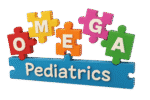
As summer approaches, some families wonder if their child can take a “medication holiday” from ADHD medications like Adderall or Ritalin. While understandable, it’s important to consider the potential downsides.
The Benefits Don’t Outweigh the Risks for Most Kids For the majority of children, stopping ADHD medication leads to a return of symptoms like inattention, hyperactivity, and impulsivity. Keeping them consistently on medication is usually the best approach for managing their ADHD. Brief holidays tend to disrupt their progress.
Some Families Still Want a break from ADHD medications. Families may have various reasons for wanting a medication break, like:
- Thinking the child has outgrown the need for medication
- Concerns about side effects like weight loss
- Wanting a break since it’s summer and less academic focus is needed
If a family feels strongly about trying a break, it can be considered – but with conditions.
How to Safely Try a Medication Holiday If you decide to try stopping medication temporarily:
- Discuss the likely re-emergence of ADHD symptoms and make a plan for what you’ll do if that occurs
- Look at the child’s summer activities – a medicated state may help them get more enjoyment and stay safer
- Set a specific time frame, like 1-2 weeks at first
- Identify ahead of time what behaviors would signal it’s time to restart medication
- Schedule a check-in to re-evaluate whether the break is still advisable
- Be prepared to restart medication if problematic symptoms return
The bottom line: Medication holidays aren’t ideal and come with risks of reversed progress. But some families still want to try. Close monitoring is essential to minimize disruption if ADHD symptoms return.
As you know, we will continue to see your child through the Summer via telemedicine or in person.
-
Screen Time is Not Playtime: 4 Reasons Why Real Play Matters for Kids’ Health
Screens are everywhere, and for many families, they have become a natural part of daily life. From TVs to tablets, video games to smartphones, children have more access to digital devices than ever before. It’s easy to understand why—after all, they are entertaining, convenient, and often give parents a much-needed break. But as comforting as…
-
What is the Right Age for Kids to Start Using a Tablet and How to Set Parental Controls?
The average age for children to start using a tablet varies depending on factors such as the child’s cognitive development, maturity level, and parental discretion. Recommendations According to the American Academy of Pediatrics (AAP), it is recommended that: 18 months below should not use a tablet except for video chatting. 18 months to 2 years…
-
What Percentage of Children Suffer from Severe Allergies and How Are They Managed?
The prevalence of severe allergies in children can vary depending on the specific allergen and geographic location. However, it is estimated that around 8% of children have food allergies, and approximately 8-10% of children have respiratory allergies such as allergic rhinitis or asthma. Managing severe allergies in children involves a combination of avoidance strategies, medication,…
-
What is the Average Age for Potty Training Children & What are the Benefits?
The average age for potty training children varies, but most children are ready between 18 months and 3 years of age. Some children may be ready earlier, while others may take longer to be fully trained. It’s important to remember that each child develops at their own pace, and there is no “right” age for…
-
What is the average age for kids to start walking, and major milestones of physical development?
The age at which children begin to walk can vary, but the average age for children to start walking is typically around 12 months. However, it’s important to note that children develop at their own pace, and there is a wide range of what is considered normal in terms of reaching physical and developmental milestones.…
-
What is Bullying and How Does it Affect Children in the U.S.?
Bullying is a type of aggressive behavior that is deliberate, recurrent, and involves a disparity in strength or power between the victim and the perpetrator. Bullying can happen offline or online and can take many different forms, including physical, verbal, and social/emotional bullying. How big is the problem? In the US, 20% of students between…



